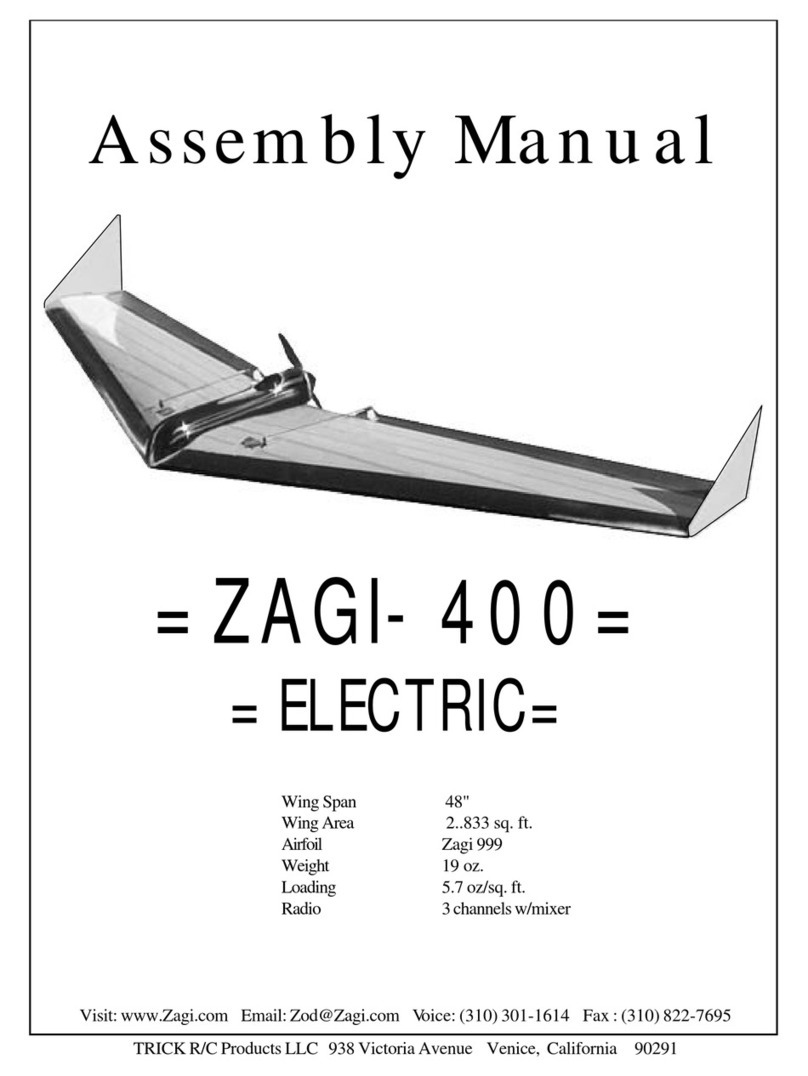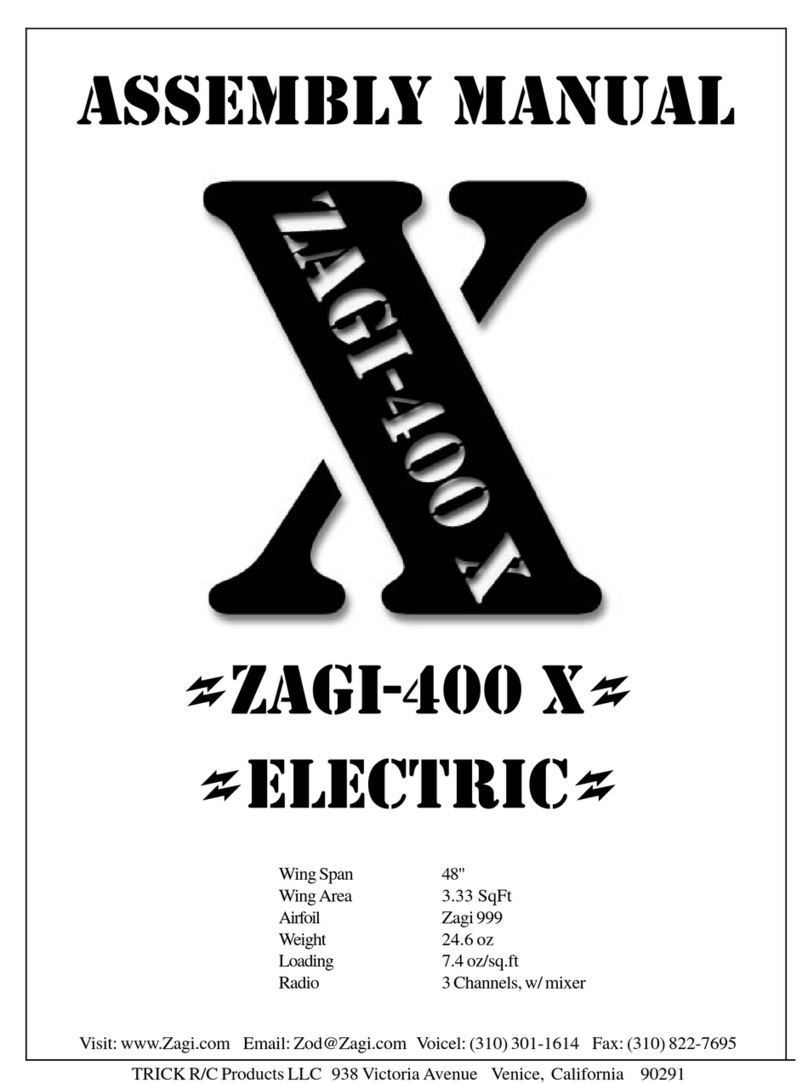
Computer radios have settings for elevon mixing. Check the radio
manual for flying wing, elevon or delta-wing mix setting. V-tail
settings will not work. Set the transmitter for elevons and deter-
mine the appropriate receiver slot for the controls. Position the
servos the way they will be in the wings, with the control arms
facing outboard. Plug the right and left servos into the receiver.
Check to see that the switch is off. Plug the switch into the battery
slot of the receiver. Plug the battery into the other side of the
switch.
With the transmitter and receiver powered up, the servos should
be 90 degrees to the servo case in the hands-off neutral stick
position. If they are not, remove the control arm and replace it at
90 degrees to the servo case. Use the trim lever to make micro
adjustments to the alignment of the control arm. When the elevon
control stick is pulled back (the opposite direction to antenna) the
servo control arms should both move forward. When the stick is
moved to the right, the right servo control arm should move
forward and the left servo control arm moves back.
The trim levers are located on all transmitters to the left and below
the control stick. Some trim controls are electronic and others are
mechanical. Trim levers are provided to adjust the zero position of
the servos. Center the trim levers to the zero position. For
details on electronic zero centering, refer to radio owner’s manual.
Power up the transmitter. Always turn the transmitter switch to the
on position before powering up the receiver. Check the battery
condition indicator on the transmitter to make sure that the battery
is charged.
Power up the receiver
7






























